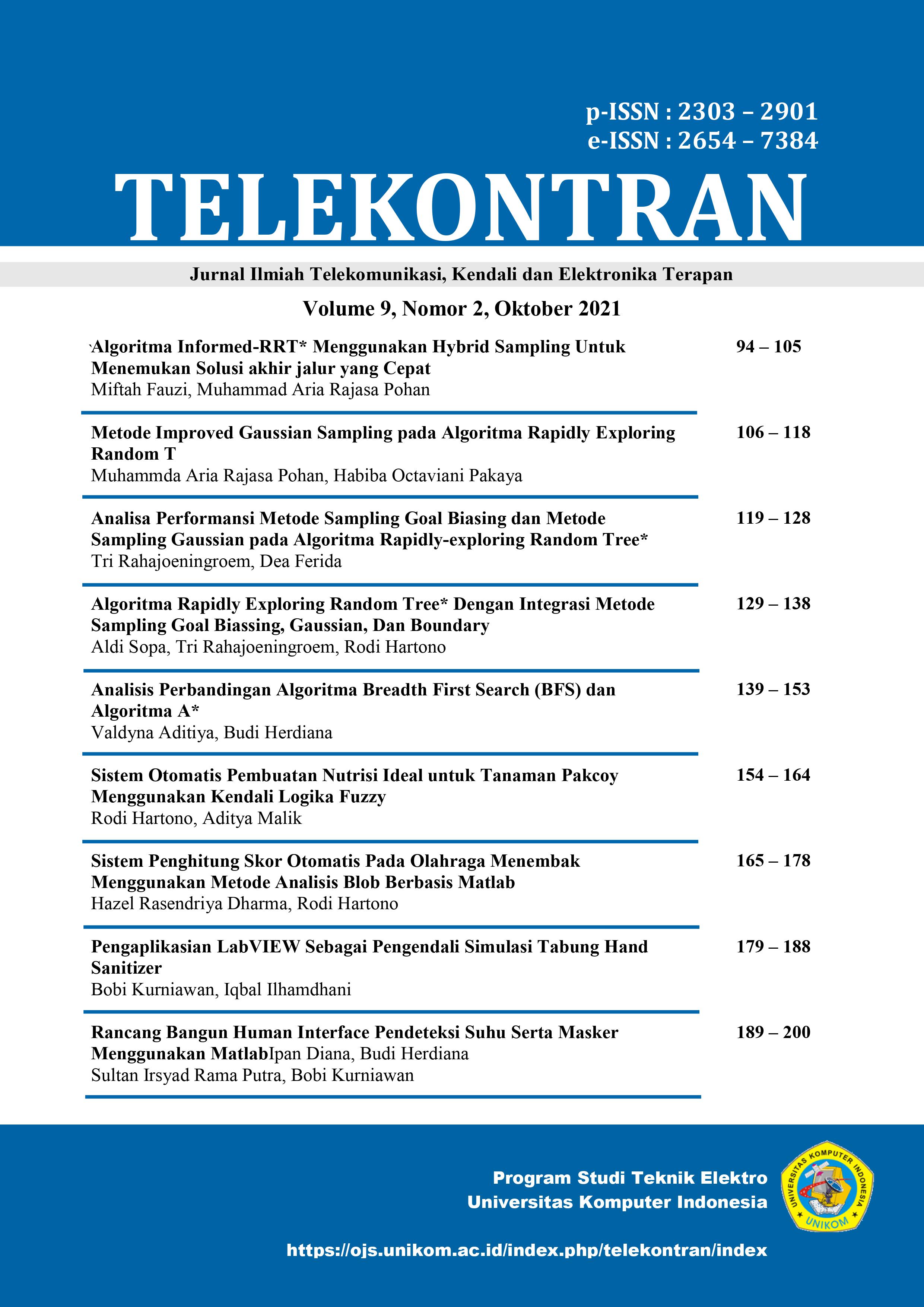Algoritma Rapidly Exploring Random Tree Star Dengan Integrasi Metode Sampling Goal Biassing, Gaussian, Dan Boundary
Main Article Content
Abstract
The path planning algorithm is to find a path that takes the robot from the start state to the goal state while avoiding collisions with obstacles. In path planning, various applications have been used such as animation, medicine, aircraft, etc. The purpose of this study is to design a new sampling method by integrating sampling methods based on goal biasing, Gaussian and Boundary and then implementing it in path planning problems using the Rapidly Exploring Random Tree* (RRT*) algorithm. We call this sampling method the integration sampling method. The path planning algorithm using this integration sampling method is implemented in the Labview programming language. The algorithm parameters in Labview can be modified to observe the output performance of the RRT* algorithm. The test was carried out in an environment of obstacle clutter, SquareField BW, and traps, where the test was carried out 20 times for each obstacle. The test was conducted to compare the path distance and computation time of the RRT* algorithm using the integration sampling method, against the RRT* algorithm using the Gaussian, and Boundary sampling method. Based on the test results, it is found that the RRT* algorithm using the integration sampling method can produce a shorter path than the RRT* algorithm using the Gaussian method and the RRT* algorithm using Boundary sampling. Comparison of the resulting computational time is faster than the Gaussian integration method. However, a comparison with Boundary shows that Boundary requires less time than integration. Therefore, it can be concluded that the Rapidly Exploring Random Tree* algorithm integration method is superior to the Gaussian method and the Boundary method.
Downloads
Article Details
Section

This work is licensed under a Creative Commons Attribution-ShareAlike 4.0 International license.
